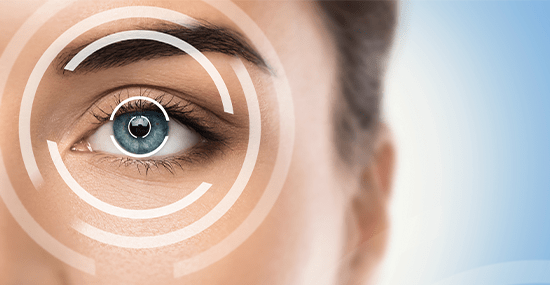



The Ophthalmology Department at the University Hospital Sharjah (UHS) provides holistic and comprehensive care along with the use of the latest technology. We have the best and dedicated Operating Rooms. These include a special unit for day surgery where one can get operated and remain in UHS for a very short duration for minor or major complex procedures. Our Ophthalmology Clinical procedures include- Cataract Cases of Different Types, Diabetic Retinopathy Including Laser Management and Intraocular Injections, Different Anterior Segment Diseases, Eye Lid Lesions, Dry Eye and Medical Management of Different Corneal Diseases and many more.
A cataract is the clouding (fogging) of the eye's natural lens that prevents light rays from passing through to the retina. It is a more common condition in the elderly, and other causes of cataracts, such as genetic causes, taking cortisone medications, diabetes, severe myopia, previous eye surgery, trauma, etc.
Diagnosis and treatment
Your doctor will conduct some eye tests, including:
If you cannot see using your eyeglasses, surgery will be the best option to treat cataract cases. It is a simple surgery that takes 20-30 minutes, where the cloudy lenses are removed and replaced with clear artificial lenses.
Diabetes is a chronic disease in which your blood glucose or sugar levels are very high. Uncontrolled levels pose a risk to associated heart, kidney, and eye disorders. People with diabetes may develop three major eye problems – glaucoma, cataract, and retinopathy. The early symptom of all these disorders is blurred vision.
Glaucoma is an eye disease that results in progressive vision loss due to the increased intraocular pressure and subsequent optic nerve damage.The goal of glaucoma treatment is to decrease the pressure in the eyes.
Optical coherence tomography (OCT) is a diagnostic imaging technique that is used to map and measure the thickness of the retina (light-sensitive layer at the back of the eye). It uses low intensity infra-red light to generate cross-sectional images of the retina. OCT is a quick, non-invasive and non-contact procedure that provides fine details of each layer of the retina.
Before passing a beam of infra-red light on the patient's eye from an OCT system, the doctor first instils eye drops to dilate the eye. The system then scans the affected eye for 10 to 15 minutes. The light that is reflected is captured by detectors and produced into an image.
Phacoemulsification uses ultrasound vibrations to break up the eye’s damaged lens. The surgeon makes a small incision of about 3-5 mm on the side of the cornea, and insert a device to break up and suction out the lens. The lens is then replaced by manmade lens.
Small-incision cataract surgery (SICS) involves an incision of around 6-7 mm made in the form of a tunnel through the sclera and cornea. The lens is removed and replaced with a rigid lens implant through this tunnel. No sutures are needed as the tiny incision will heal naturally by itself.